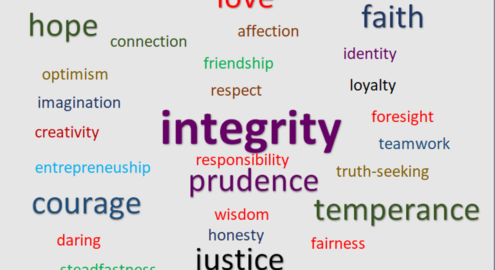What Is It?
Researchers have defined forgiveness as a process, beginning with the choice to let go of resentment, negative judgment, and negative behavior towards the person who has harmed you. However, forgiveness does not require you to excuse, condone, forget, or reconcile with the person who has harmed you, nor does it require them to apologize. Indeed, the offender doesn’t even need to be aware that you have forgiven them.
Instead, forgiveness brings you peace of mind and frees you from corrosive anger. It helps you to recognize the pain you have suffered without letting that pain define you, enabling you to heal and move on with your life. With time, some experts suggest that you may even begin to cultivate positive feelings, thoughts, and behaviors toward the offender—including compassion, generosity, and love.
Ultimately, forgiveness is a choice one makes for oneself—one that can take time to fully be realized, but is worth it in the end.
A young boy feels hurt after not being invited to play in a game during recess. Later he decides to forgive his two friends who excluded him and offers to share his markers with them while they are working on an art project.
Why is it important?
Forgiveness strengthens students’ relationships.
- Forgiveness fosters conciliatory gestures in children, such as a willingness to share. Such gestures can prevent relationships from deteriorating, improving satisfaction and commitment within the relationship.
Forgiveness improves student well-being.
- Forgiveness training with students restores hope and increases happiness among children, while reducing anger, anxiety, and depression.
- Forgiveness training can help adolescent girls who are bullies and bullied decrease their anger, aggression, and delinquency, while increasing their empathy and improving their grades.
Forgiveness supports student success.
- Young people who forgive also tend to perform better academically.
Helping children and teens to learn to forgive looks different at different ages.
- Ages 4-5. Introduce children to the concept of love—caring for the other for the sake of the other. For example, read picture books to students in which there are loving interactions between characters.
- Ages 6-7. Students can understand the causes and effects of people’s actions, and thus can start to learn about forgiveness systematically:
- Step 1: Introduce the theme of inherent worth or the idea that all people—no matter who they are—have value. Each person is special, unique, and irreplaceable.
- Step 2: Before introducing the theme of forgiveness itself, you can lay a further foundation by showing students the themes of kindness, respect, and generosity.
- Step 3. Introduce students to forgiveness, but only through stories and not through their own experience of forgiving those who hurt them. You can explain forgiveness this way: When people forgive, they are kind to those who are not kind to them. They try to show respect to those who have not shown respect to them, and try to be generous to those who have not been generous to them.
They also try to be loving to their family members even if the family members are not loving to them, at least at the moment. - Step 4. Tell students that to forgive does not mean automatic reconciliation. Sometimes, a child must stay away from another child if the latter is continually bullying. The one who is being bullied needs to tell an adult.
- Step 5. Students may forgive, but only if they are ready and only if they choose to consider forgiveness. Forgiveness is a choice and should not be pressured. For those who are ready, they can then consider offering kindness, respect, generosity, and love toward the offending person.
- Ages 10-13. Introduce the three themes of forgiving, receiving forgiveness, and reconciling. To receive forgiveness requires the humility to acknowledge wrongdoing and to wait until the one offended is ready to forgive. To reconcile, the two people are willing to come together again in mutual trust. In other words, the one who was unfair takes steps to change. Forgiving can occur without reconciliation if the one who offends refuses to alter the unfair actions.
- Ages 14-18. High schoolers are ready for a more sophisticated forgiving by following the steps in the Forgiveness Process Model. Adolescents in high school may be ready to consider the challenge to forgive not just one person but anyone toward whom they harbor continuing resentment.
Practice Collections
Practices

Courage Blooms

Developing the Courage to Speak Up

Reminders that Encourage Moral Character Strengths

Introduction to Forgiveness

Understanding Inherent Worth: A Path towards Forgiveness

Learning from Courageous Forgivers

Creating Space for Forgiveness by Letting Go of Anger

Are you ready to build a kinder, happier school where everyone belongs? Join Greater Good Educators! Explore the science of well-being in a supportive community of educators from around the world. Registration is now open for the 2025-2026 school year!



